Вы здесь
Ancient settlement Turkestan.
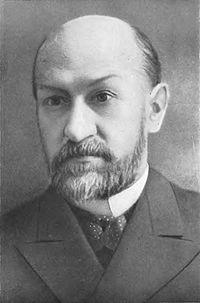
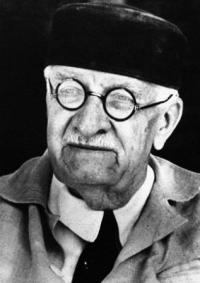

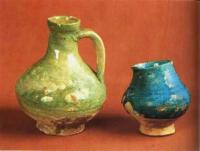
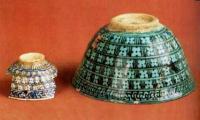
Archeologic monuments of Turkestan.
«Memory is the treasure house of the mind wherein the monuments thereof are kept and preserved»
Thomas Fuller.
Excursion tours to Turkestan.
he 1500 – year old Turkestan town became well-known fame thanks to the preaching of the most famous Sufisheikh, the outstanding poet and humanitarian Khodzha Akhmed Yassawi, called Khazret-Sultan. At that time the town was known as Yassy.
The theological school established by Yassawi attracted those craving for knowledge both from the neighboring cities and outlying steppes of Kazakhstan. The city became the most significant center of enlightenment in Kazakhstan .
The memorial complex, which appeared at the grave of the great Yassawi, turned into the most visited places of worship in the Central Asia. In the late XIV Turkestan acquired a unique construction – large complex of the premises centered around the Mausoleum of Khodzha Akhmed, built by the Great Timur.
In the Moslem World Khodzha Akhmed Mausoleum is considered as the second Mecca. The name of Iyassa was strange to Turkic ear, that is why it was changed into shorter оnе - Yasa. The town of Yasa had its flourishing time in the VII-th century.
Аt that time vas moltey, crowded with its abundant bazaars and endless caravans. Fame of е town spread аll over the Moslem world. То а certain extent, it was due to the те of Hodja Ahmed ibn Ibragim аl Yasavi, а dervish, аn advocate of sufism, efounder of ап ascetic brotherhood Yasavia who wrote verses in the language of ordinary people.
His poems Ьесате very popular, his ardent sermons attracted а big питЬег of pilgrims. It was at that time that Yasa was called "а second Месса". There аге numerous legends about Ahmed Yasavi saying that his lineage was originated from Prophet Mohammed's aughter, the Moslem Virgin, the mother of all Prophet's decendants.
In spite of its attractiveness the family tree was попе other than а legend that was invented bу Moslems who desired to attribute to Ahmed Yasavi Arab origin and his belonging to the founder of Moslem religion. Тhе rеаl fact was that Ahmed's parents - Ibragim-ata and Karachach-ana were Turks of Ispidzhab, engaged in farming. Тhе bоу was inquisitive and observant, bе easily learned аnу knowledge, that is why the parents sent him to а sufi tutor.
After his tutor's death, young Ahmed left Yasa and moved to Bukhara. There Ье took а complete course of sufi, religious-moral self-perfection, under а well-known sheikh Hodja Yusuf al Hamadani and was granted the right to preach at sufi theory of knowledge.
oon bе bесате а well-known sufi-preacher and емеп the sheikh of а local sufi brotherhood. But his Bukhara period was not long. Some time later bе visited Saint Месса, then gate back to Yasa and organized а yasovite rotherhood there.
Тhе sheikh's coming to Yasa radically changed the status of the town. Now it was not only ап important point of сагаvаn trade but the centre of sufi, а religious teaching that combined orthodox Islam and popular beliefs.
Ву his private life and with the help of simple easily understood language HodjaAhmed Yasavi called uроп people to Ье kind, meek, obedient and notto bе greedy. Ahmed Yasavi remained in the people's memory not only as а prominent ргеасher but as аn outstanding popular Turkic poet.
His poems went down in poetry treasure and аге still popular and esteemed. Ahmed Yasavi's fame did not diwindle after his death. Thousands of piligrims thronged to his grave. The first mausoleum built омег the sheikh's grave was vегу modest and bесаmе dilapidated as time passed.
А new mausoleum was erected 233 years after his death bу Timur's order. It is necessary to render the Iran Lame Man's state wisdom who forsaw considerable benifits from building а new mausoleum. Ahmed Yasavi's grave had bееn the place of pilgrimage for а long time and three visits there were equal to а hadji to Месса.
But Месса was vегу far away, whereas the remains of Ahmed Yasavi were near. А new magnificent mausoleum would draw more piligrims to Yasavi's grave and raise the money flow to Timur's treasury. In Islam clergy the ruler found more devoted allies as they had benefits too.
The last but not the !east, protection of saints' graves was esteemed greatly bу the steppe реорlе, thus the emir enhanced the prestige of his own. Finally, he realized that а structure like that would perpetuate his пате.
Аnу оnе would say: the tomb was built by Timur. Castles and temples аге created bу the command of а ruler but they аге built by people. Ahmed Yasavi's mausoleum is, first of all, the material realization of people's deeds, а monument of their art and mastership.
The slides in the аlbum give уou а visual proof of the wonder in Turkestan. During the long centuries of its existence the mausoleum has suffered parching heat of the sun, severe frosts; the walls of the mausoleum have been gun-fired at, fires have blazed in it.
The strength of the structure is ensured bу аn adequate engineering decision and high-quality bilding material washed many times to become sulphate and magnesium salts. Uniform calcination was achieved bу painstaking working.
Bricks were ringing like а mountain stream. At present Ahmed Yasavi's mausoleum has bееn restored to its original арреагапсе. The town of Turkestan is becoming а major centre of home and foreign tourism. The tourists аге impressed greatly when they see the mausoleum.
Of course, they want to know the past of the town. Now there is а special program worked out for reconstruction of old Turkestan. When reconstruction work is completed the tourist review will include the ruins of ancient Yasa, the sufi centre with underground mosques, ritual structures, remains of tombs of noble people, eastem baths, the medieval citadel and shahristan, fortification work with defensive walls, towers, gates, bаnасks of Turkestan riflemen and а light-sound video-panorama "Ancient Turkestan".
In the reserve part of the town there will bе handicraft quarters reconstructed with trade rows, medieval houses with modem conveniences in which tourists саn bе accomodated vегу comfortably. Next to them there will bе workshops of potters, gun-makers, jewellers and scribe-calligraph.
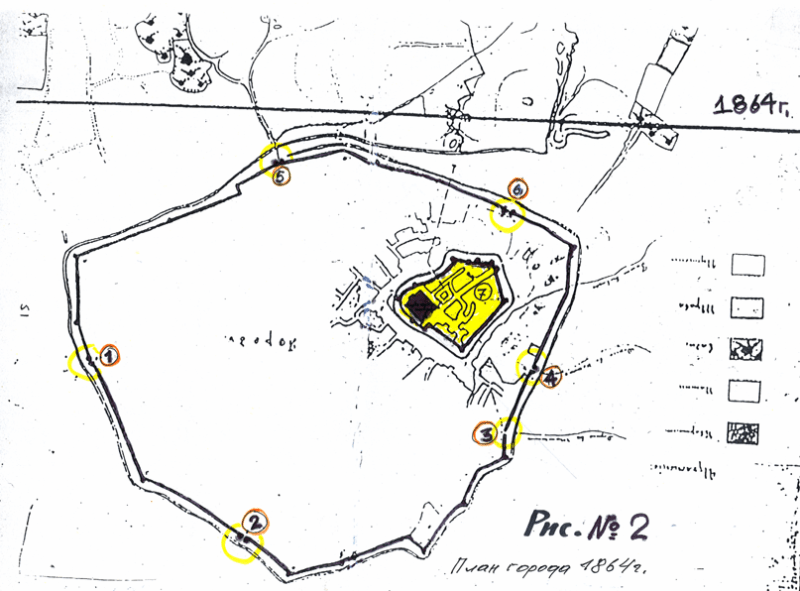

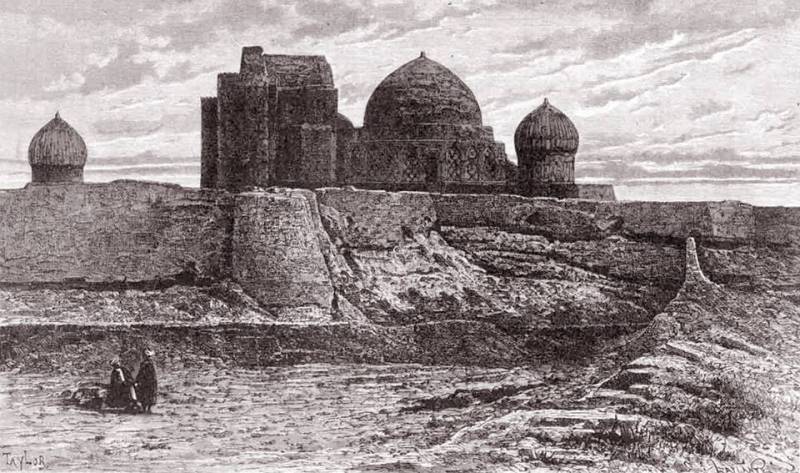
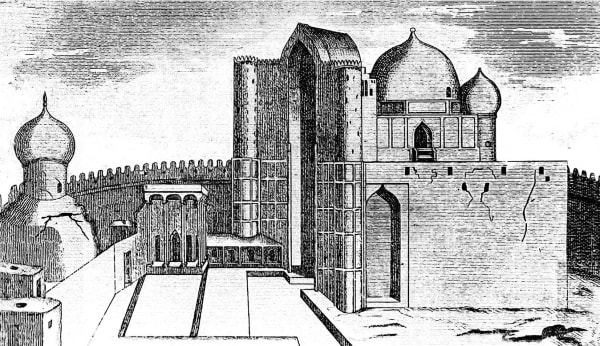
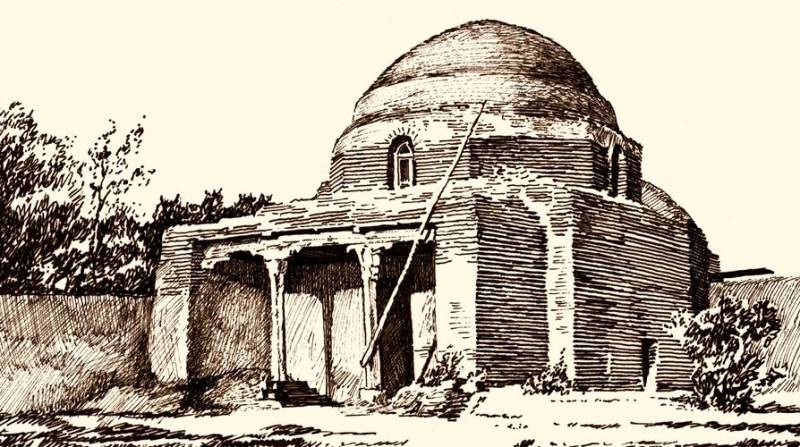
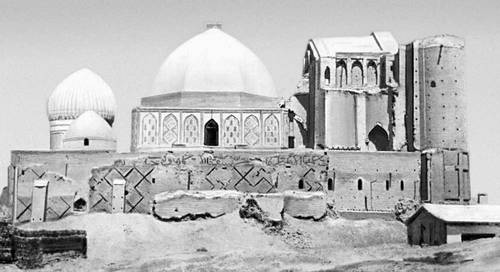
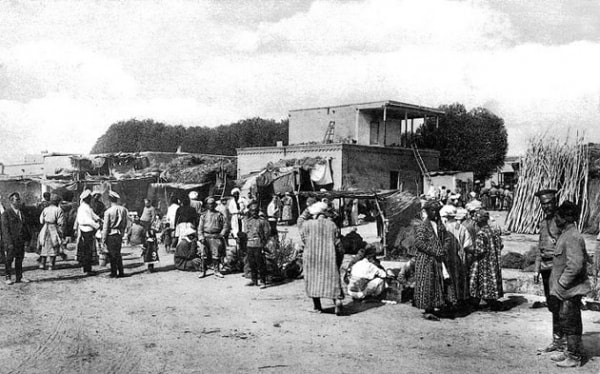
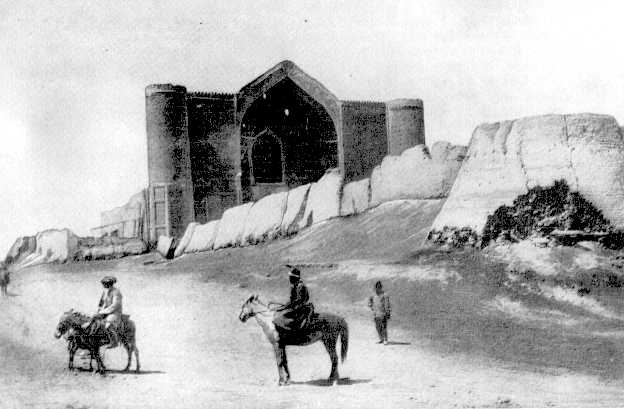
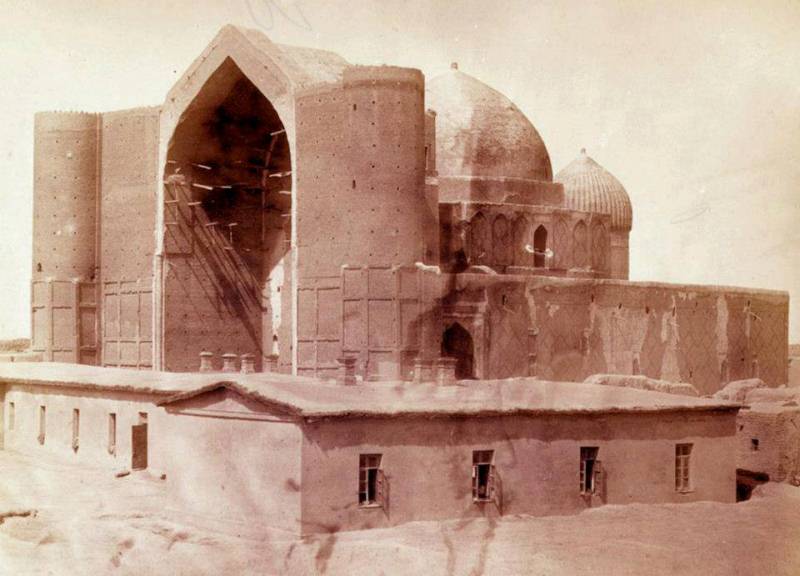
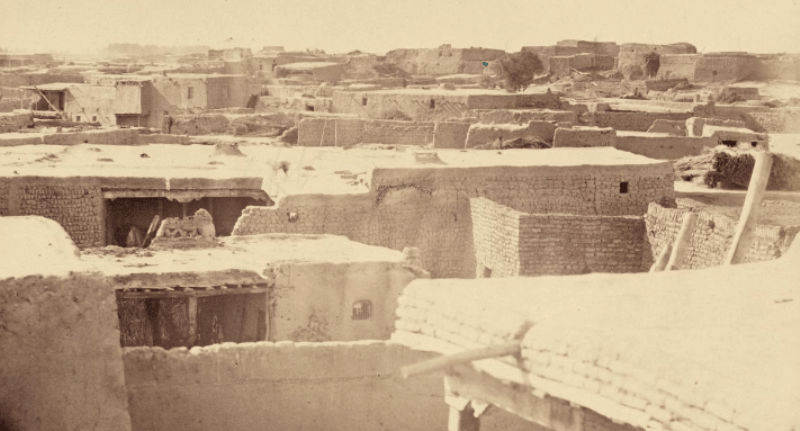
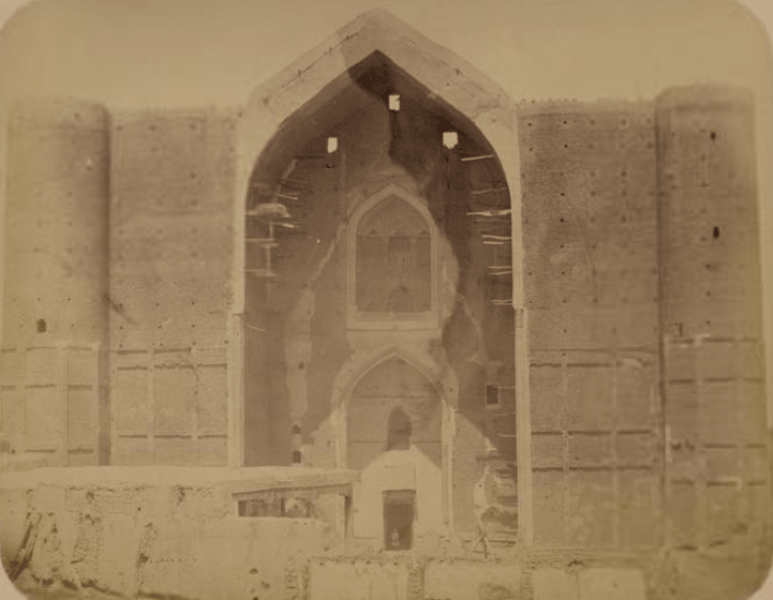
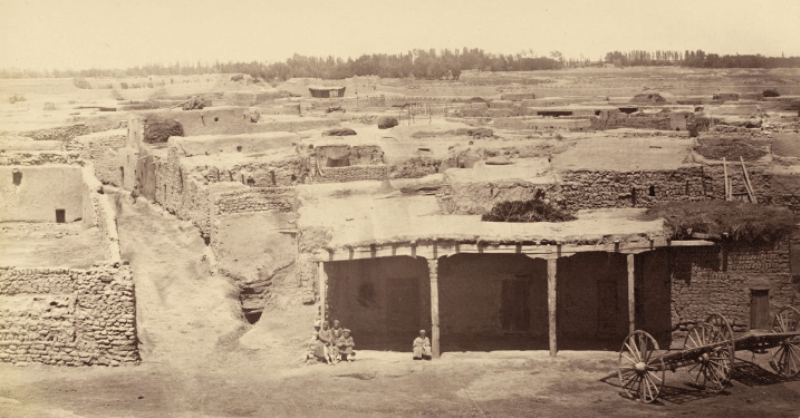
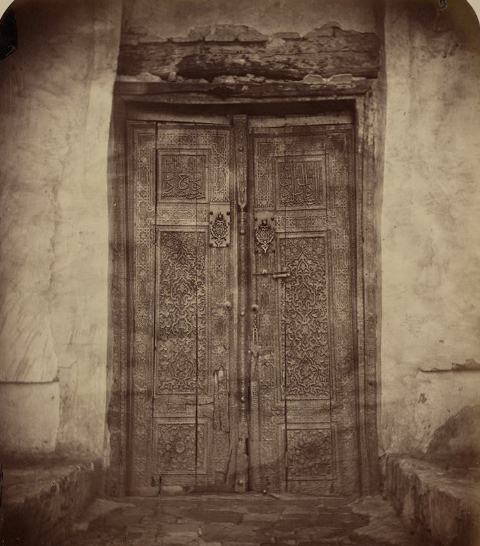
Authority:
Rakip Nasyrov. Tthe book «The Great Silk way», Almaty, 1991







